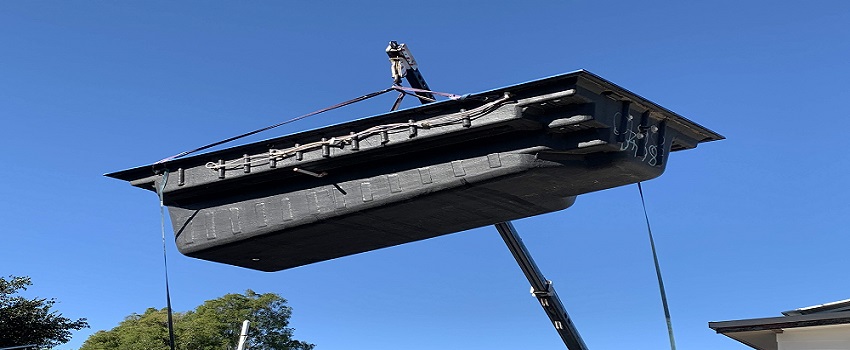Three Questions Most Buyers Have About DIY Fibreglass Pools
When it comes to DIY pools, we are often asked similar questions from pool buyers just like you. Fair enough too. Here are three questions that we hear lots of times about fibreglass pool shells and DIY pools.
Can DIY fibreglass pools be installed on sloping sites?
Yes. Today’s fibreglass pool shells are incredibly strong and can be installed on sloping sites. A well-manufactured shell can be up to 300mm above natural ground level. If more than 300mm of the shell will be out of the ground, you will need retaining walls to allow the pool to be backfilled and level. You can spend anywhere between $2,000 and $10,000+ on retaining walls depending on how much retaining is needed. The alternative to retaining walls is having ribs/buttresses fitted to the outside of the shell to hold the above-ground pool wall in place. This is a workaround and generally costs more than installing retaining.
If the ground where your fibreglass swimming pool is going has a slope, or your land is significantly (300mm+) higher or lower than your neighbours, arrange a retaining wall quote early in your process so you know the cost you are up for.
While we are talking about neighbours, check with your local council or building certifier about how close to your boundary fencing you are permitted to install your pool. Also, check how close to your house you can install your pool. You might hear of a rule of thumb of "the deep end depth of your pool is the distance you need to be from your house and boundary fence" which is often true. It is also equally as often not true depending on your council. We have customers in every State and Territory in Australia (except Tassie!) and know firsthand that every council has its own interpretation of what will and won't be approved when it comes to distances from fences and houses.
Can DIY fibreglass pool shells be lifted over two-story houses?
Yes. We’ve yet to find a backyard that a DIY fibreglass pool shell cannot be crane lifted into. It is a question of how big a crane will you need to be able to reach over your house from the road and into your backyard.
What determines the size of the crane you need?
- How close can the crane get to your house to set up? Can your driveway/front yard take the weight of the crane without damaging it or does the crane have to be set up on your street?
- What overhead obstacles are in the way? Things like trees, powerlines, and street lights the crane will need to lift the pool shell over
- What is the weight of your pool shell? A rough rule of thumb for a fibreglass pool that has been properly made is to allow for 100kg of weight per 1m of pool length. i.e. a 7m long pool will weigh approximately 700kg.
- Where is the shell going? Does the crane need to lift your pool shell over the house and into the excavated hole or onto the unexcavated ground?
Crane hire usually costs between $300 (for a small Franna crane) to $1,500 (50 ton crane) which will cover the vast majority of projects. Cranes can go up to 100 tons and reach 60m.
If your street is busy, you may need the services of a traffic management company which can cost several thousand dollars. Most crane hire companies can give you a good estimate based on Google Maps and the information above as a starting point.
Can DIY fibreglass pools be installed with narrow side of house access?
Yes. Whether concrete or fibreglass, a decent amount of excavated soil will need to be removed. If your site access is a very narrow 1m, your earth workers will need smaller excavation and bobcat equipment which adds to excavation and dirt removal time. As they say, time is money. As a rule of thumb, for access less than 2.5m wide, the cost will start to increase. When you are talking to trades to help with your installation, make sure you let them know how wide your side access is so there are no surprise costs when they arrive to start the job.
As a side note, make sure you allow for the removal of the excavated soil. The further you are from a dumping point, the higher the cost will be for soil removal. Have a look at websites like http://www.needdirt.com.au/ and http://www.fillwanted.com.au/ to see if you might be able to have your fill collected at no cost or find a building site close by that is looking for fill (your soil) to cut down dumping costs.
Related Blogs
When it comes to backyard swimming pools, fibreglass options often come out on top. They are fast to install, low maintenance, and last for decades. But are they perfect for everyone? Not necessarily.
About The Author
My wife and I grew up playing in swimming pools. Our daughters learnt to swim in our backyard fibreglass swimming pool. There is nothing quite like hearing kids splashing about and giggling. As pools do, our pool became a social magnet for friends, family and neighbours which we loved. Helping customers to have their own pool and saving customers thousands on their pool and equipment is the best job in the world.

























